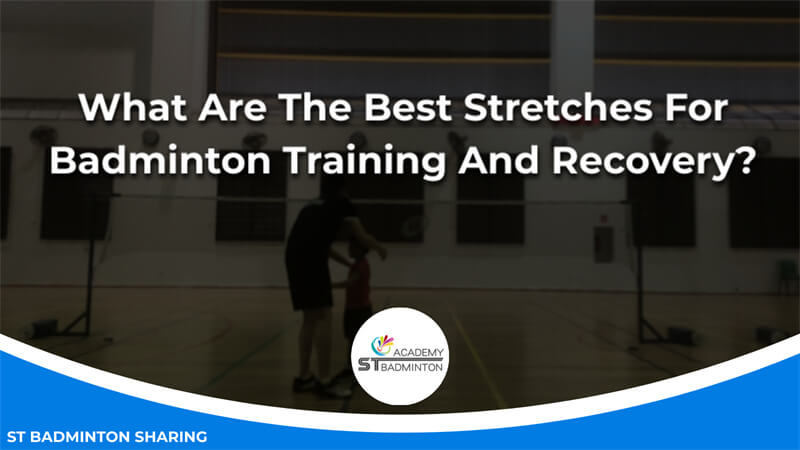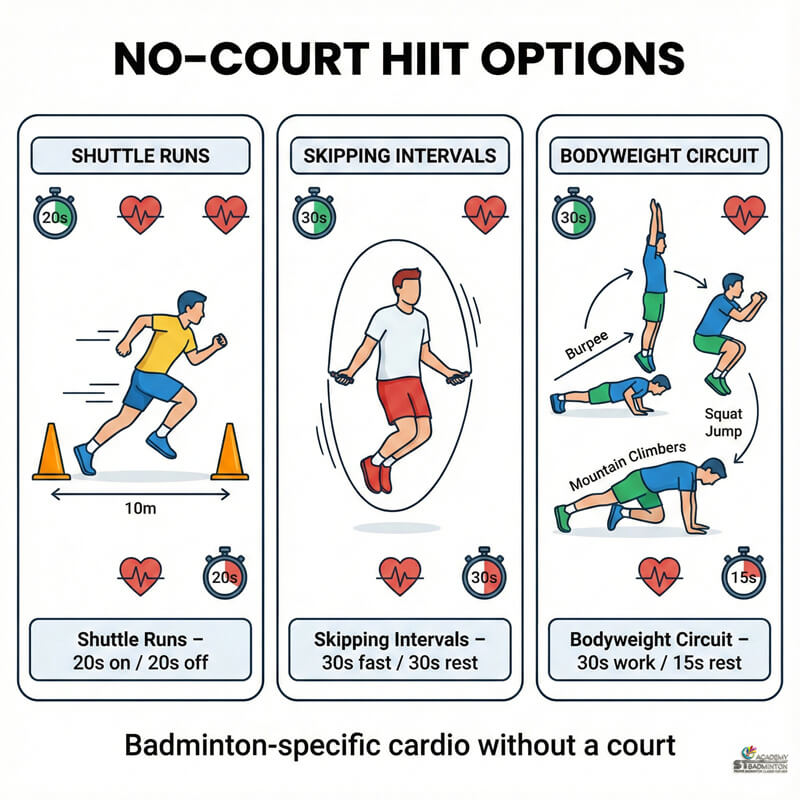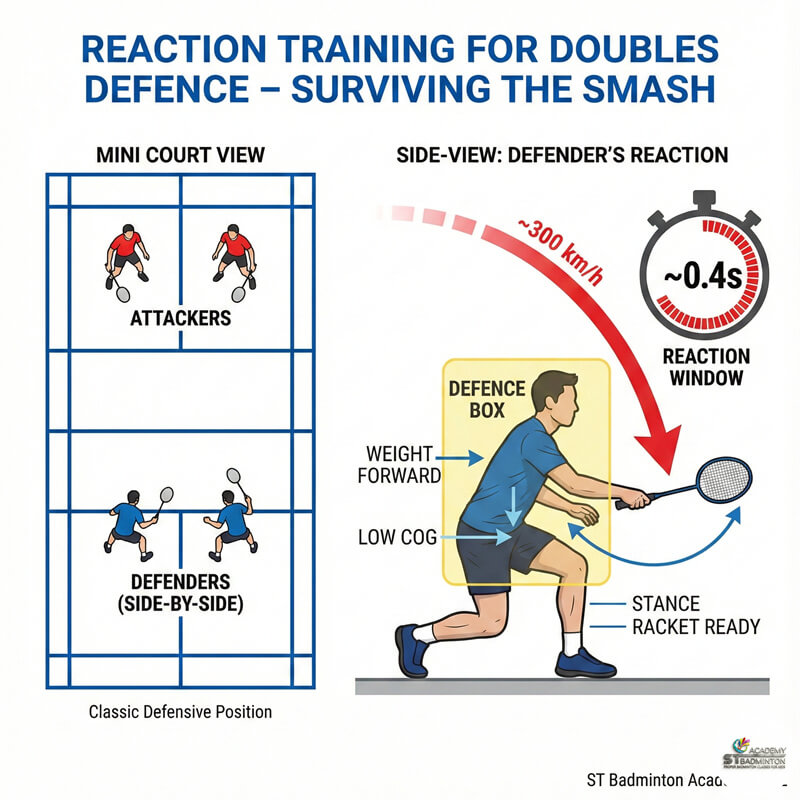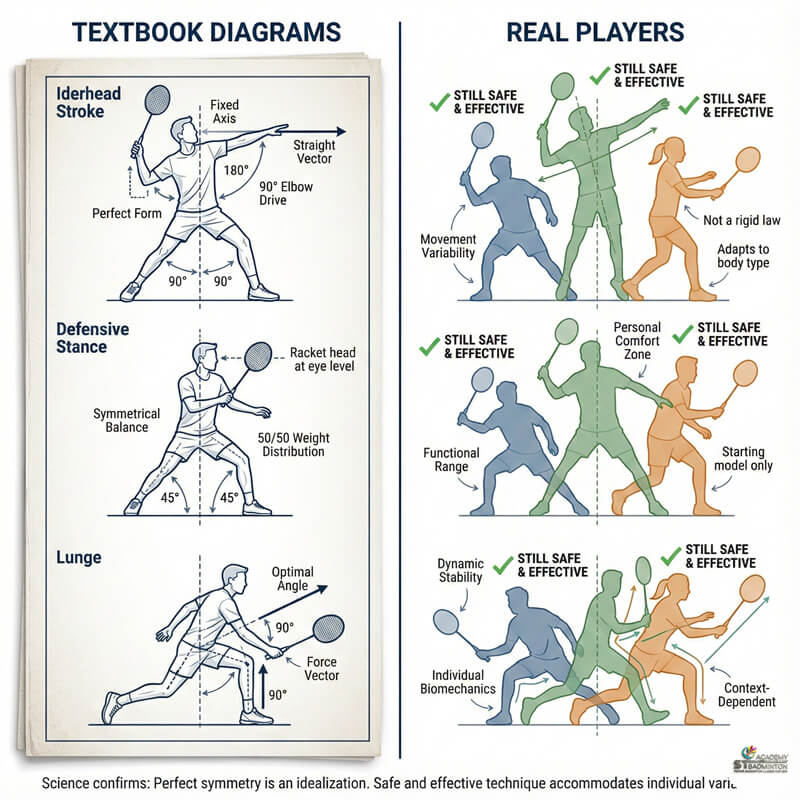Welcome to ST Badminton Academy’s badminton training in Malaysia! I’m here to tell you all about the best stretches for badminton players. Whether you’re just starting out or have been playing for years, these moves will help keep your body in top shape. After all, proper stretching can make a huge difference when it comes to preventing injuries and improving performance. Let’s take a look at some of my favorite stretches that are perfect for both training and recovery.
Neck Stretches
As a badminton training and recovery expert, I highly recommend neck stretches for improving posture, preventing injuries, and ensuring optimal performance. To start off your stretching routine, begin by sitting up straight. Next, drop your chin downwards towards your chest so that you feel an intense stretch in the back of your neck. Hold this position for 10-15 seconds before releasing it.
Then rotate your head to one side and hold again for 10-15 seconds. Make sure not to rotate too far or push beyond any discomfort you may be feeling during this exercise. Afterward, repeat these same steps on the other side of your neck for 10-15 seconds each time. This simple but effective stretching technique is key to maintaining good form while playing badminton as well as avoiding potential injury risks. With regular practice of these exercises, you’ll soon see improvements in both flexibility and strength! Moving onto shoulder stretches…
Shoulder Stretches
Now that our necks have been stretched and loosened, we move on to the shoulders. Having good shoulder flexibility is important in badminton as it allows you to reach a greater range of shots, while also improving posture and preventing injury.
The first stretch for your shoulders involves standing up straight with feet hip-width apart and arms at your side. Slowly raise your arms above your head until they are fully extended outwards, stretching the front portion of your shoulders. Hold this position for 10 seconds before slowly bringing your arms back down again. This can be repeated three times for maximum effectiveness.
Next, take one arm across the body towards the opposite shoulder so that you feel a slight pulling sensation near your armpit area. Place your other hand against the elbow joint of the arm being stretched and gently pull downwards towards the floor to increase tension in order to get an even deeper stretch through the rotator cuff muscles.
Focus on deep breathing throughout each repetition which should last 5 – 10 seconds depending on how far you can comfortably go without pain or discomfort occurring. These shoulder stretches should be done gradually over time in order to achieve optimum results and prevent any serious injuries from happening during training sessions or competitions. To further improve posture and core strength, let’s now turn our attention to chest stretches.
Chest Stretches
I’m often asked, what are the best stretches for badminton training and recovery? Chest stretches should be a part of every athlete’s routine. Not only do these exercises help improve breathing, but they also play an important role in injury prevention. Here are 4 chest stretching exercises to consider adding into your regular workout:
| Chest Stretching Exercises for Badminton Training | Description |
|---|---|
| Pectoralis Major & Minor Stretch | Pectoralis Major & Minor Stretch: Lean forward against a wall with one arm at 90 degrees to the ground while keeping your feet flat on the floor. Hold this position for 10-30 seconds and switch arms. |
| Shoulder Blade Squeeze | Shoulder Blade Squeeze: Sitting up straight on the floor or chair, squeeze your shoulder blades together and hold for 5-10 seconds before releasing them gently back down. Repeat this exercise 10 times. |
| Wall Push Ups | Wall Push Ups: Stand facing away from a wall and place both hands slightly above shoulder width apart onto it. Keeping your legs as still as possible, bend your elbows to lower yourself towards the wall then push off until you reach starting position again. Do 2 sets of 8 reps with 30-second breaks between each set. |
| Thoracic Extension Over Foam Roller | Thoracic Extension Over Foam Roller: Lie face up over a foam roller placed horizontally across your upper back/shoulders area so that it’s parallel to your spine (between shoulder blade and lower neck). Place both arms behind the head and gently press hips upward, extending through the middle back region for 6-8 deep breaths before returning to starting position slowly and repeat 3 more times per side if desired. |
These exercises can contribute significantly to movement efficiency and help in injury prevention during badminton training and recovery.
Back Stretches
Stretching is essential for any badminton player with the goal of strengthening their performance and improving recovery. It increases flexibility, boosts endurance, reduces injury risk, and even helps manage stress levels. There are a variety of stretching exercises that can be done to help you reach peak performance in the court.
| Back stretches provide several benefits specifically for badminton players: | Benefits | Core Exercises |
|---|---|---|
| Flexibility & Mobility | Pull-up Bars/Kettlebells Swings/Deadlifts | |
| Improved Posture & Balance | Planks/Core Rotations/Bird Dogs | |
| Injury Prevention & Recovery | Reverse Lunges/Bridges/Superman Holds |
These back stretches will improve your range of motion throughout your body – especially important when trying to hit those difficult shots on the court. Additionally, it’ll promote better posture which leads to improved balance and stability during gameplay. Lastly, these back stretches also reduce fatigue and lessen potential injuries due to overuse or strain. With regular practice, you’ll start seeing huge strides in your game as well as overall physical health!
Looking ahead, hip stretches are next up in our training and recovery plan. These moves target some key areas of movement while providing additional strength building opportunities…
Hip Stretches
Stretching the hip muscles is an essential part of any badminton training and recovery program. Doing so helps to ensure that players have a full range of motion while they’re on court, reducing their risk of injury and helping them perform at their best.
There are several stretches that target the hips specifically, each offering unique benefits for both injury prevention as well as improved performance.
The first stretch I recommend is called the “runner’s lunge”. This move involves standing with one foot forward and bent slightly at the knee, then bending your back leg behind you until it touches or almost touches the ground. It works multiple muscle groups in your legs and lower body all at once, which can help improve balance, flexibility and overall agility on court.
Another great exercise to add into your routine is a simple kneeling hip flexor stretch. To do this, kneel down on one knee, keeping your other foot firmly planted on the floor in front of you.
Then lean forward slowly until you feel a mild tension in your hip area – hold here for 20-30 seconds before switching sides and repeating the same movement. By stretching out these tight muscles regularly, you’ll be able to stay agile during matches without putting undue stress or strain on your joints.
These two exercises can form an important part of any athlete’s warmup routine or post-workout cool-down session – but there are many more dynamic moves that focus on stretching out the hips effectively too! From side lunges to single-leg bridges, incorporating variety into your stretching regimen will keep things interesting while still providing excellent results when it comes to preventing injuries and improving athletic performance.
Hamstring Stretches
My training and recovery sessions with my badminton team always start with hamstring stretches. I can’t stress enough how important it is to warm up your muscles before you play or practice, but even more so for a high-intensity sport like badminton. As an expert in the field of badminton training and recovery, I want everyone to remember that stretching those hamstrings comes with some great benefits.
Regularly stretching your hamstrings helps keep the muscular balance between them and your quadriceps in check. It’s also a great way to prevent future injuries by keeping those tendons flexible and ready to go when called upon during game time. The extra flexibility makes sure that they are strong enough to handle any sudden movements while playing too!
So don’t forget about taking care of your hamstrings as part of your regular pre-game routine. With just a few minutes dedicated each day to these simple exercises, you’ll be well on your way towards avoiding pain or injury down the line — which means better performance on court now and later! Moving onto calf stretches next…
Calf Stretches
Calf stretches are an essential part of any badminton training and recovery routine. Stretching your calves can help improve flexibility and reduce the risk of injury during play, as well as helping to keep them healthy after a match or practice session. The best calf stretching exercises involve both static and dynamic movements that target all aspects of this muscle group.
I recommend doing a combination of standing on one foot with slightly bent knees, followed by some light massage using either a foam roller or tennis ball for added pressure. For extra relief from tightness and soreness in the lower legs, it’s also beneficial to perform active ankle circles before going into the stretch itself. This helps warm up the muscles and increase blood flow even further.
A good way to get started is to hold each position for at least 15-30 seconds before switching sides. I often like to pair these calf stretches with other lower leg exercises such as heel lifts or toe touches, which can provide additional benefits when done correctly – just make sure you’re not overdoing it!
With regular practice, your calves will become more flexible over time, allowing you to enjoy the improved performance while avoiding injuries associated with too much strain on the area. Transitioning into quadriceps stretches now, they’re another key component of any successful badminton training and recovery program.
Quadriceps Stretches
Having covered calf stretches, the next step in badminton training and recovery is quadriceps stretches. Quadriceps are essential for a powerful serve but can be easily overworked due to all of the explosive jumps and lunges involved with badminton.
The key is to make sure your quads get enough rest so they can keep up with your footwork drills during games. Doing some targeted stretching before and after every session will help ensure you don’t suffer from any avoidable injuries.
Begin by standing on one leg while raising the other behind you, using something like a chair or wall as support if needed. Hold this position for 20-30 seconds then switch legs – repeat three times per side. This basic stretch should work most of your quads without straining them too much.
To really target those hard-to-reach inner muscles, try doing a low lunge pose where you place one knee on the ground while keeping your back upright. You want to feel the tension in both sides of each thigh, pushing equally against each other as you hold this pose for 20 seconds at least five times per side (ideally more).
Don’t forget that core exercises also play an important role in strengthening and protecting your quads — focus on planks, sit-ups and Russian twists to build endurance around the hip flexors which protect these vital parts of your body when sprinting about the court!
Frequently Asked Questions

How Often Should I Perform Stretches For Badminton Training And Recovery?
When it comes to badminton training and recovery, stretching should be done regularly. Depending on your level of fitness, you can perform stretches at least three times a week for optimal results. When performing these stretches, focus on muscle-strengthening techniques such as dynamic and static stretching exercises that target the glutes, hamstrings, and calves.
Make sure to hold each stretch for 20-30 seconds and repeat up to 3 times per side. This will help ensure proper warmups before practice or competition as well as aid in post-workout recovery so you don’t feel stiff or sore afterward.
What Type Of Warm-Up Exercises Should I Do Before Badminton Training?
It’s important for badminton players to warm up properly before each training session. Dynamic stretching is a great way to prepare your body by loosening up muscles and increasing flexibility, while mental preparation will help you focus on the upcoming game. Other than choosing a good racket and also remember to choose the best racket restring in Malaysia.
Examples of dynamic stretches that are beneficial for badminton include arm circles, high knees, butt kicks, jumping jacks, and side shuffles. Make sure to spend 5-10 minutes warming up both physically and mentally before every match or practice!
Is It Necessary To Stretch Before And After Playing Badminton?
Yes! It is absolutely essential to stretch before and after playing badminton. Not only does stretching help improve your flexibility, but it can also decrease the risk of injury drastically. This means you’ll be able to play longer and stronger without worrying about soreness or fatigue. Before a game, it’s important to not only warm up with dynamic stretches but also fuel yourself properly with pre-game nutrition and get mentally prepared for what lies ahead.
Afterward, static stretches will help cool down your muscles, allowing them to recover faster. So next time you go out on the court remember that stretching is just as important as any other part of training or recovery – don’t skip it!
Are There Any Stretches I Should Avoid In Badminton Training?
It’s important to use the right stretching techniques when preparing for and recovering from badminton training. There are some stretches that you should avoid as they can cause muscle soreness or worse, injury. For example, bouncing while stretching a muscle is never recommended, since it increases the risk of tearing muscles. Instead, focus on gradual tension builds with deep breathing and slow release; this will help your body better prepare for physical activity without putting strain on any specific muscles.
How Can Stretching Help Me Improve My Badminton Performance?
Stretching is an important part of any badminton training routine and can help you improve your performance immensely. Proper stretching techniques target the muscles used during a match, enabling them to work at their full potential while reducing the risk of injury.
Stretching before and after playing will also reduce fatigue and soreness in your muscles so that you’re ready for your next game or practice session. When it comes to improving your performance in badminton, don’t forget about incorporating stretching into your routine!
Learn Badminton Training and Recovery in Malaysia
Stretching is an important part of badminton training and recovery, just as it is with any other sport. When done correctly, stretching can help you improve your performance on the court while also reducing your risk of injury. As a badminton expert, I recommend that players stretch regularly before and after playing to optimize their game.
By including dynamic stretches into your warm-up routine, you’ll prepare your body for movement while increasing flexibility and power in all areas.
And by incorporating static stretches into your cool-down periods, you’ll be providing yourself with a chance to relax both physically and mentally — allowing for improved focus during practices or matches. So remember: when it comes to badminton training and recovery, stretching should never be overlooked!





